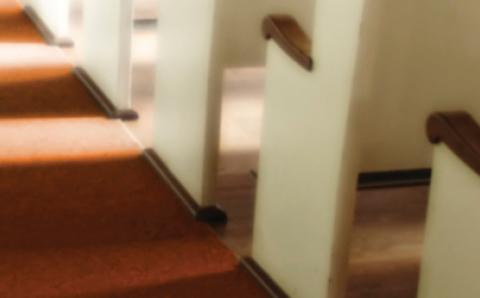Goldenrod is a plant with tiny yellow flowers bunched together on a stem and lots of stems bunched together in a patch. It’s usually the last flower blooming in the fall.
Lots of people call goldenrod a weed. But if bugs could talk, they’d call it a hotel.
As the nights grow cold, bugs seem to know that goldenrod is a great place to sleep. Even when there’s not much pollen or nectar left to eat in other plants, goldenrod still has it on the menu. So Hotel Goldenrod is usually full of guests this time of year.
You can visit Hotel Goldenrod and meet some of those guests. Even though they don’t speak our language, their Creator certainly speaks through them. Just take a close look.
Wake-up Call
If you visit the goldenrod plant early in the morning before the sun has shone, you may have to shake some bugs out of bed. Take a white pillowcase or a large piece of white paper. Place it on the ground under the flowers, close to the stems. Shake the flowers. Lots of things will fall out. Anything that doesn’t move is probably a piece of dead plant. Anything that does move is a sleepy or cold bug. Cold bugs move slowly, so they’re easy to watch for a while.
Overnight Guests
The first insects you’ll find have come for food—nectar and pollen—and stayed overnight. You’ll probably find a stray wasp or two. Their colonies have broken up; these guys are out and about alone.
Once in a while you’ll find larger bugs that have stayed the night. Flies, bees, damselflies, and maybe even a dragonfly may check in at Hotel Goldenrod.
Long-term Residents
You should find lots of goldenrod soldier beetles hanging out on the plants. These bugs are brown and yellow, about an inch (5-15 mm) long, and have long antennae.
After eating a breakfast of pollen and nectar, soldier beetles patrol the whole plant. They look for the aphids and caterpillars that feed on goldenrod plants and eat those bugs. That way they help protect the plant! But they also eat goldenrod leaves—and are preyed upon by other residents on this plant. They’re an intricate part of the goldenrod world.
Two Predators
Keep your eyes peeled for two resident predators.
First, look for a goldenrod crab spider. This critter looks like a tiny yellow crab. It’s got a fat round body with long, elbowed legs poking out of it sides.
Guess what? This cool spider can change its color to match the plant! When it climbs up onto the goldenrod flower it’s usually white with pink streaks. It sits for a few days and becomes yellow to hide among the flowers. If it drops off the plant it becomes white again. Put it back onto the flowers and it will become yellow in a few days.
There are about 3,000 kinds of crab spiders worldwide. Besides the goldenrod crab spider, few, if any, can change color.
To find the second predator, you should look for a butterfly or fly that isn’t moving. In other words, search for a dead bug to find its predator, the ambush bug. Smaller than a crab spider, yet sitting just as quietly, the ambush bug is almost invisible. It has a jagged outline and a yellow and brown camouflage suit. This stealthy bug is very small but very aggressive.
When an unwary visitor wanders within reach, the ambush bug grabs it with lightning speed. It jabs its needle-like mouth into the victim, killing it. Then the ambush bug injects a “meat tenderizer” into its “meal” and slowly slurps up the juices.
Cool Combo.
If you don’t see goldenrod beetles, you might find this cool combo instead. You probably won’t see both, because the combo doesn’t like to live with the beetle. Look first for some tiny (12 mm or ½ inch) green, three-sided bugs. From the side they resemble small green buffalo heads. These are buffalo tree hoppers. They suck juices from goldenrod leaves and stems. Each tree hopper sucks more juice than its body can use. Look for little droplets of unused sticky clear juice (called honeydew) oozing from each treehopper. Then look for ants walking near the treehoppers, sucking up the honeydew. Ants are the second part of this cool combo.
Pretend you’re going to pick up a tree hopper and you’ll have an ant soon threaten your finger. Ants protect tree hoppers because they want the honeydew. It’s sort of like a farmer taking care of cows because we want to drink milk. Sometimes ants go a step farther. They chase goldenrod beetles off the plant because they “want” tree hoppers to have all the good food. That’s like a farmer keeping a pasture green and lush for cows to feed.
And There’s More . . .
Many more residents live inside the stems and leaves and on the roots of Hotel Goldenrod. There’s almost no end to them. Of course! This is creation—there’s always more to discover.
So go on out and look . . . and wonder.
About the Author
Joanne De Jonge is a freelance writer and a former U.S. National Park Ranger. She attends West Valley Christian Fellowship in Phoenix, Ariz.









